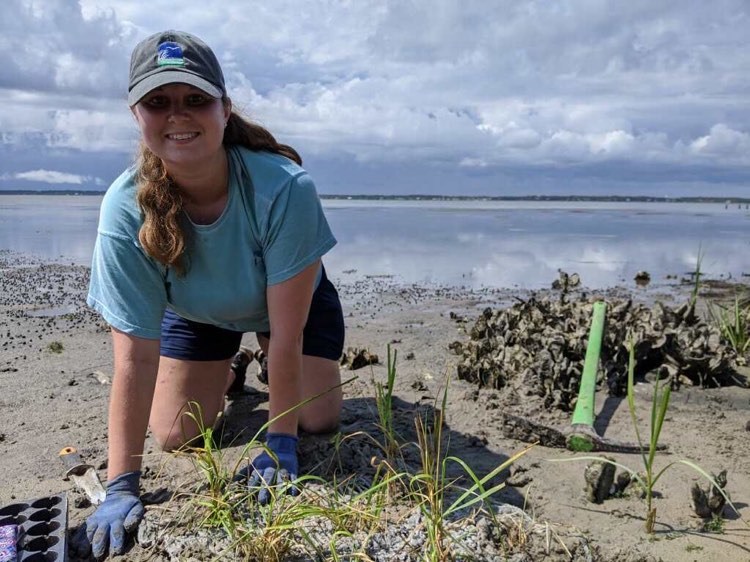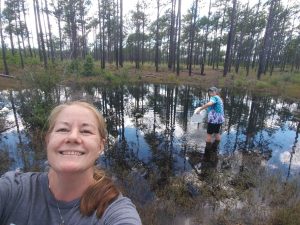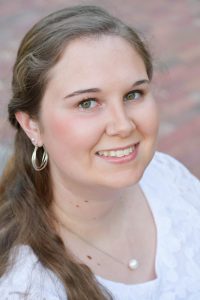As IDEA program for underrepresented students concludes, new program funded and in development
December 3, 2020
The UNC Institute for the Environment hosted its final cohort of six IDEA (Increasing Diversity and Enhancing Academia) students this summer, matching a total of 78 students with geoscience internships between 2012 and 2020. IDEA, which has been funded by the National Science Foundation (NSF) through the GEOPATHS program, provided undergraduate students with paid research internships, professional development experiences, and mentorship from UNC-Chapel Hill faculty. Seventy of the total IDEA students identify as part of a group that is underrepresented in the geosciences, defined by NSF as women and people of African American/Black, Hispanic American, Native Pacific Islander (Polynesian or Micronesian), and Native American (American Indian or Alaskan Native) descent.
Although this year’s program has differed slightly due to COVID-19, students were still able to participate in unique and meaningful research experiences, said Megan Hoert Hughes, STEM diversity program manager and environmental health educator with IE’s Center for Public Engagement with Science.
“We focus heavily on the mentor-mentee relationship because we have evidence in the literature that when students have strong mentor-mentee relationships, it is one of the factors that helps them persist in the sciences or in the geosciences,” Hughes said.
Every summer, a new cohort of undergraduate students from UNC-Chapel Hill and North Carolina Central University (NCCU) participate in the IDEA program, which is led by Hughes and Kathleen Gray, research associate professor at the Institute. Sherick Hughes, a professor at UNC’s School of Education, led the evaluation activity for the program.
Participants complete a research project over the program’s 10-week course and present it at the undergraduate research symposium. Hughes also hosts weekly professional development sessions and general check-ins, and part of this time is spent working together to create deliverables for the final research project.
In the past, some cohorts’ internships have extended into the academic year. There are typically around 20 applicants for 10 spots, although the number varies year to year. For this final summer, the cohort was smaller, consisting of only six students, and everyone worked remotely. Although UNC-Chapel Hill had opened up its labs at 50 percent capacity, many faculty members decided not to allow undergraduates in their labs due to the pandemic. Half of this year’s cohort consisted of women from UNC, and the rest of the participants were men from North Carolina Central University (NCCU), a historically-black university in Durham. Hughes said the group is diverse in many ways, which fulfills the program’s goals.
After two successful awards, IDEA is coming to a close. At the same time, IE is excited to launch the new 21st Century Environmental Health Scholars program (21EH Scholars), in partnership with the NCCU College of Health and Sciences and the UNC schools of Public Health and Medicine and funded by the National Institute of Environmental Health Sciences. This program, developed by co-principal investigators Gray, Antonio Baines, associate professor, NCCU; and Ilona Jaspers, professor, UNC School of Medicine, will provide internships for undergraduates in environmental health science research.
“Both the National Science Foundation and the NIEHS support programs that focus on developing a diverse STEM workforce and a STEM-literate public,” Gray said. “This emphasis is especially important in the geosciences, which are the least diverse disciplines within STEM. With the IDEA program and the new 21EH Scholars, we are supporting mentored research experiences for undergraduates who are underrepresented in STEM, a group which includes women and people who are Black/African-American, LatinX, and American Indian or Alaska Native.”
In the final IDEA cohort, two students from NCCU earned their drone certifications through the Federal Aviation Administration. This will allow them to fly drones, which have many geoscience research applications. Janina Millis, a recent graduate, worked with Carol Seals Price, conservation research coordinator the North Carolina Aquariums on multiple projects.

Millis said she is helping Price head-start – or raise – gopher frogs before releasing them as part of a conservation effort. The animals are on North Carolina’s threatened species list. She also is doing work with SPOT A Shark USA, a citizen science project focused on sand tiger sharks.
“Citizen divers submit ROV (remotely operated vehicle) footage or personal pictures, and what I do is I go through and look at the unique pattern of spots on the shark’s body and map them and long-term what that will do is look at migration and migration patterns,” Millis said.
Since many of the aquariums’ researchers are lacking interns this summer, said Millis, Price has allowed her to assist with their projects as well. Millis said the program has been invaluable to her, specifically because of her plans to complete the dual degree program in Environment and Science Communication (ESC).
Students in the ESC program earn a bachelor of arts in environmental studies or a bachelor of science in environmental science, as well as a master of arts in media and communication. Millis majored in environmental studies as an undergraduate, and she will earn her master’s degree in public relations.
 Janina Millis
Janina Millis“I’ve just been trying to get as much experience in any field I can possibly get my hands on, so that way I have a better understanding of the science world, before I transition to a more literary world. So, it’s been vital to me because this allows me to get all these various experiences, working with scientists, with the aquarium, working with animals, working with plants, whatever it is they have to do,” Millis said. “But, as a woman who is pursuing something a bit different, you know, it’s something very niche. Not many people do SciComm, so I do think it is valuable to give women, women of color, anyone who is at I guess, I don’t want to say at a disadvantage, but doesn’t necessarily have that leg up as others would have.”
The IDEA program also provides a unique value to students, Hughes said, because they work with the Graduate School at UNC-Chapel Hill to answer questions students like Millis might have about the graduate school application process, available funding and what it is like to attend. They also teach students a variety of professional development and communication skills, such as writing resumés, CVs, statements of purpose and abstracts, learning how to review literature, creating a professional poster and communicating research to a non-scientific audience.
“Then, I think another component is working with the students as a cohort because they develop supportive relationships with one another that seem to persist long after the program has ended,” Hughes said. “And the thinking is, when you feel like you are part of a scientific community, you start feeling like a scientist and that helps you to move on to the next step toward a career goal or a higher education goal.”
Although IDEA does tackle a lack of racial representation in the geosciences, Hughes said she believes a program like this is only one step in the right direction. Cultural changes must take place at UNC-Chapel Hill and in the greater scientific community, said Hughes, and professors must acknowledge that many black, Latinx and indigenous students, as well as women, have experienced racism and sexism during their schooling.
“We don’t really talk about that as white faculty or I guess as the majority community faculty. We don’t talk about that. We don’t acknowledge that,” Hughes said. “You know, we’re nice and welcoming, but there’s work that needs to be done well beyond that, to help mentors and faculty really understand the types of trauma that a student may have experienced throughout the K-12 and the university experience to become a scientist of color in the academy or in the professional world.
In addition to facilitating the IDEA program, Hughes also conducts outreach on asthma, healthy homes and childhood lead poisoning prevention through the Community Engagement Core of the Center for Environmental Health and Susceptibility (CEHS) at the Gillings School of Global Public Health. She has significant experience as an environmental educator and community advocate and has held positions at the Center for Environmental Programs at Bowling Green State University in Ohio and the Environmental Finance Center at the University of Maryland, College Park.
Before entering the workforce, Hughes majored in environmental studies at the University of North Carolina at Wilmington and environmental management at Duke. She said having strong mentor-mentee relationships helped steer her toward her major.
“When I was in high school I had a fantastic mentor, who was male and really encouraged me to pursue my interest in environmental science. And the summer between my junior and senior year in high school I did a marine science field study program down in Beaufort, North Carolina,” Hughes said. “It was fantastic and provided me with two more mentors who I continue to be in touch with so I would say I had great mentors who really encouraged me to pursue environmental science and who helped me build a career,.”
Story by Ellie Heffernan
Ellie Heffernan is a junior at UNC majoring in journalism and environmental studies. During her time at UNC, she has written for The Daily Tar Heel, volunteered with Musical Empowerment as a teacher and leadership team member, and been a part of the Service and Leadership Residential Learning Program.
